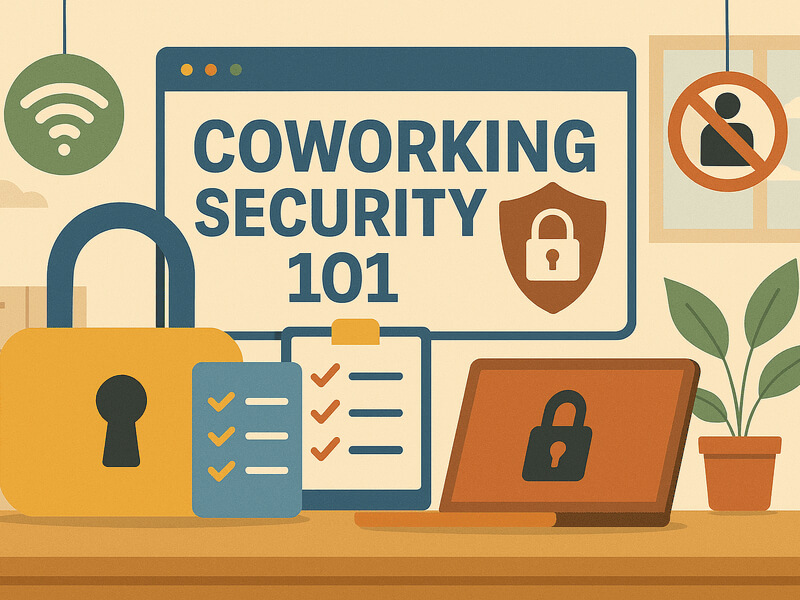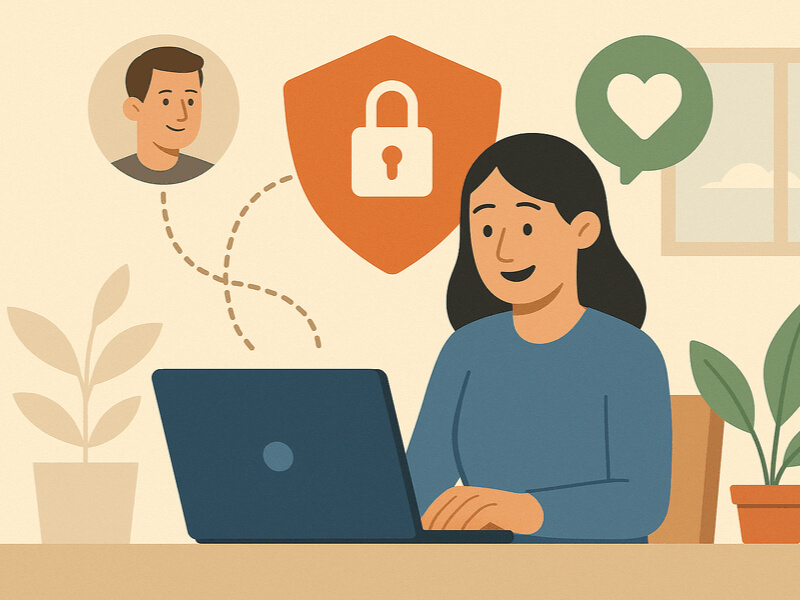
A beautiful design can draw attention, but on closer study, it may turn out to be confusing and uninformative. On the other hand, an easy-to-use design may appear outmoded and unpleasant. Achieving a balance is critical—design should not emphasize one component over another. It needs to be both useful and visually appealing, and this is where UI/UX design comes in.
In this post, we’ll explore why UX UI design services are important and how to create a good UI/UX design.
Importance of UI/UX design
Makes a good first impression
When someone visits your website or uses your app, they develop an impression. If the design is incorrect, they leave relatively immediately. A well-crafted UI/UX design does more than merely draw attention. It reassures users and puts them at rest. This builds trust and encourages users to explore more of your site. If you're looking for impactful visual ideas, then we recommend checking out these creative poster design tips.
Increases usability
Usability is the foundation of a positive user experience. If your platform is difficult to access, users will rapidly quit it. Good UX design thinking makes navigating simple and straightforward. It allows people to execute things with minimum effort. Every click or scroll seems deliberate and seamless.
Improves customer retention
Positive user experiences bring people back. When users know your platform is easy to use, they feel satisfied. This satisfaction leads to higher retention rates, which can significantly increase customer lifetime value. Happy users are more likely to return, becoming loyal to your brand.
Enhances brand perception
A high-quality UI/UX design reflects professionalism. It shows that your business is modern and reliable. On the other hand, poor design makes your brand seem outdated and untrustworthy.
Increases efficiency
Efficient design reduces the time users spend figuring things out. Whether it’s filling out a form or completing a task, good design speeds up these actions. It makes the user experience more fluid and reduces support costs.
UI/UX design process explained

Research
Research is the first step. UI/UX firms thoroughly examine your target market, corporate objectives, and the issues you wish to resolve. They perform surveys, competitive analysis, and user interviews. To obtain insightful information, they also examine data from already-existing items.
Personas and user journey mapping
Once the research is in, agencies create personas. These represent different types of users with unique needs and behaviors. Then, they map out user journeys. These maps show the steps users take to reach their goals. They help identify pain points and areas that need improvement.
Wire-framing and prototyping
Next comes wire-framing. This is the blueprint of your product's interface. Wireframes outline the layout and functionality but aren't final designs. Once approved, agencies build prototypes. These simulate the user experience more closely, giving a tangible feel of how users will interact with the product. Professional UI/UX designers have some of the best infographic makers at their disposal to accomplish this. Make sure you confirm the availability beforehand to keep everything on track.
UI design
Companies concentrate on graphic design once wireframes and prototypes are complete. This covers the font, color palette, icons, and other components. While keeping the essence of your name, the style should be simple and easy to use. The goal is to build a visually appealing interface that improves the user experience.
User testing
Testing is crucial before finalizing the design. Agencies put the prototype in front of real users. Observing their interactions helps identify issues and areas for improvement.
Iteration and refinement
Based on feedback, the design goes through iterations. This might mean adjusting visuals, navigation flows, or simplifying certain features. Iteration ensures the design aligns with user needs and expectations.
Final development and lunch
Once polished, the design moves to development. Developers transform the design into a working product. Designers and developers collaborate closely to ensure the final product matches the intended design.
Post-launch evaluation and improvement
After launch, the work doesn’t stop. Agencies monitor the product’s performance, track user behavior, and gather feedback.
Top features of great UI/UX design
User-centric focus
At the heart of UI/UX design lies the user. The goal? Understand the user deeply—know their behavior, predict their actions. It’s about knowing where users might trip up. Where will they expect a button? An image? A hint? Predicting those moments, designing for them, and making their journey as effortless as possible. That’s the user-centric focus.
Consistency
Without consistency in design, users feel lost, disoriented. Ever tried using a website where the buttons are different on every page? It’s confusing. But with consistency? It’s smooth sailing. Standardized elements—buttons, fonts, icons—create a predictable experience. When users know what to expect, they feel confident. They trust your interface. And trust leads to a better user experience.
Responsiveness
Design needs to respond. Literally. Not just in the sense of meeting user needs but adjusting to the device they’re using. Look at a news outlet like BBC. Their website? It adapts. On a desktop, it’s one layout. On a tablet, another. On a smartphone, it adjusts again. Buttons resize. Images shift. Content remains legible. Whether on desktop or phone, the experience stays seamless. That’s responsiveness.
Accessibility
Accessibility is crucial. Think of Twitter’s app. It offers options to adjust text size, high contrast modes. Why? To make sure those with vision impairments still have a top-notch experience. Accessibility means no one’s left behind. Design that’s inclusive, that’s the mark of greatness.
Mistakes in UI/UX design
After launch, the work doesn’t end. Agencies track performance, monitor user behavior, and collect feedback. But the biggest challenges are often rooted in design missteps. Those mistakes—small or large—can completely change the user experience. They make interactions frustrating, confusing, and, worse, leave users with a sour impression. Here’s where to look out for them.
Lack of consistency
Inconsistent design is a huge mistake. When buttons, colors, and fonts jump from page to page without reason, users get confused. Why does this button look different here? What does that color mean? Consistency builds trust. It’s what makes users feel at home. When elements stay consistent across every page, users immediately know what to expect.
Overcrowded interface
Too much going on at once? That’s clutter. And clutter is chaos. The goal of UI/UX is simplicity. If users are bombarded with information, they’ll lose focus. When everything has space to shine, users can focus on what matters most.
Ignoring the mobile experience
Many users access platforms on their mobile devices, yet a desktop-only design often leaves them struggling. Adapt the design to mobile screens, and not just visually. Make it touch-friendly. Buttons should be big enough to tap easily. Navigation should be simple. The mobile experience matters. If it’s neglected, users won’t hesitate to ditch the site for one that works on their phone.
Poor navigation
Navigating an app or site shouldn’t be a guessing game. If menus are buried, hard to find, or unintuitive, users will quickly get lost. If they can’t figure out where to go next, frustration sets in. That’s why intuitive navigation is key.
Neglecting accessibility
Ignoring accessibility is a design killer. It’s not just about adding features for users with disabilities—it’s about making sure your platform works for all users. With the wide range of conditions that qualify for disability affecting millions of Americans, accessible design becomes even more critical for reaching your full audience. Text should contrast well with the background. Buttons should be large enough for all to click. Consider options like dark mode, high-contrast text, or text resizing. Failing to make your design accessible means missing out on a big part of your audience.
Unclear CTA buttons
A button that doesn’t make its purpose clear? Buttons should stand out — big, bold, and clear in their intent. If the CTA isn’t obvious, you’re losing potential engagement.
How to choose a UI/UX design service provider
Here’s a guide to help you make the right choice:
- Review their portfolio: Look for diversity in their work—different industries, creative solutions, and the ability to adapt to various challenges.
- Evaluate their process: A user-centered approach is crucial. Ensure they prioritize user research and understand real user needs, as this gives insight into their working style, attention to detail, and how their UX design service pricing aligns with the complexity of the process.
- Check client testimonials and reviews: Go beyond general feedback—look for specific examples of success and insights into their working style.
- Assess communication skills: Clear and responsive communication is key for a smooth collaboration and alignment of goals.
- Understand their design philosophy: Make sure their approach matches your project’s objectives—whether they are innovative or follow more traditional design practices.
- Designing UI/UX doesn't end with launch: You need someone who will stay on the team to keep an eye on the product's performance, record user interactions, and make necessary modifications in response to customer input. It all comes down to ensuring that the design continues to develop and get better over time.
A final note
UI/UX design is not something that should be ignored. You must collaborate with experts in the field if you want it done correctly. Many businesses partner with product design agencies to get support from teams that specialize in usability, visual design, and user research, ensuring each product aligns with user needs and business goals. A competent design partner will assist you in creating a product that is both aesthetically pleasing and user-friendly, ensuring that it remains useful and captivating as your business expands.



























